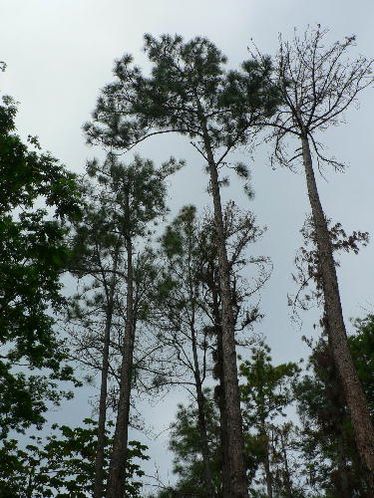Non-Pests > Physiological responses > Pinus caribaea, (?lightening) deaths, Fr Polynesia
Non-Pests Physiological responses Pinus caribaea, (?lightening) deaths, Fr Polynesia
|
Pinus caribaea, deaths, Papeete, Fr Polynesia
|
|
|
 |
|
November 2012. A fast death of Pinus caribaea in French Polynesia: the needles turn yellow and fall, and the trees are dead within 2 months. Patches of dead trees occur in treh forest as the disorder affects neighbouring trees. The problem has been seen in several islands for at least 2 years, but seems to have intensified in teh last 2 years.Several insects have been associated with the death of these trees: Scolytidae/Bostrichidae or Cerambycidae, and Blattidae. Has anyone seen a similar condition, and knows of its cause?
Members said the following:
- has pine pitch canker, Fusarium circinatum, been considered?;
- has the base of the tree just below and just above ground level been examined, looking for resinous exudates? Cut into the bark just above and below ground and look for any discolored or dead tissue. Also dig further out and see whether the main roots are dead or alive. Trees can often suffer from extensive root and crown rots for some time but hold on with just a few functional roots and small healthy crown area. But when that goes the tree can die very quickly;
- has lightning strike been considered? It often strikes killing trees in patches. Look on the tree in the centre of a dead patch and see if there are any scars running from the top to the base indicating a lightning strike. If it strikes the ground it then can kill the roots of neighboring trees creating a dead patch of trees. Have you had any significant thunderstorms prior to the symptoms appearing?
|
|
|
